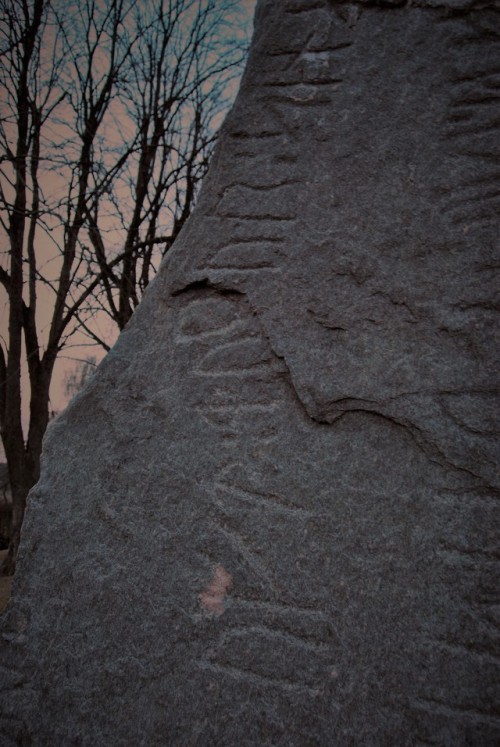#harald blatand
This is an inscripted runestone from the 10th century Viking age, located in the graveyard of Rimsø church, Denmark. The church itself dates back to 1150, making it one of the oldest churches of Denmark, and underneath it might also hide a former structure from the late Viking age. With its 2,30m of hight, Rimsø runestone is one of the tallest runestones in the country (there are taller ones only on Bornholm), and one of the few stones in Scandinavia erected for a woman. The stone is made of blue granite and inscripted in the Younger Futhark runic alphabeth, a reduced form of only 16 characters of the Elder Futhark, which was in use from the 2nd to the 8th century. Its inscription, partially damaged, states that “Þórir, Einráði’s brother, raised this stone in memory of his mother and … (a mother’s death) is the worst (misfortune) for a son”. Expressing feelings at the end of a runestone inscription is quite unique. Another peculiarity of this stone is that the runic text starts on the narrow side of the stone, unlike most runestones found in Europe, where it usually starts on the larger side. Rimsø runestone also stands out as this is the only runestone in Denmark with the so-called “lønskrift” scripture, where some words, four in this case, must be read in reverse.
The stone stands on a 24m large and 1.5m high tumulus that has never been archaeologically excavated. On the top of the mound, there’s a depression that could reveal the presence of a partially collapsed burial chamber, that might contain the remains of this woman. It’s not sure where the stone was originally located, if on the top of the burial mound or on its foot, and if it was part of the burial mound, but only an archaeological investigation of the complex could shed some light on their possible connection. What we know is that about 100 Danish churches stand on more ancient burial grounds, the most famous of which are in Jelling, where a church has been built between two large burial mounds, the graves of King Gorm and Queen Thyra, whose remains Harald Blåtand later moved to the first Christian church he built in Jelling. Rimsø runestone is mentioned for the first time in 1832. Until 1875 it was walled into the south side of the church near the pedestal, and in 1889 it got its present location on the mound. Until 1814 there was also another smaller runestone, which has now unfortunately disappeared.
Post link




